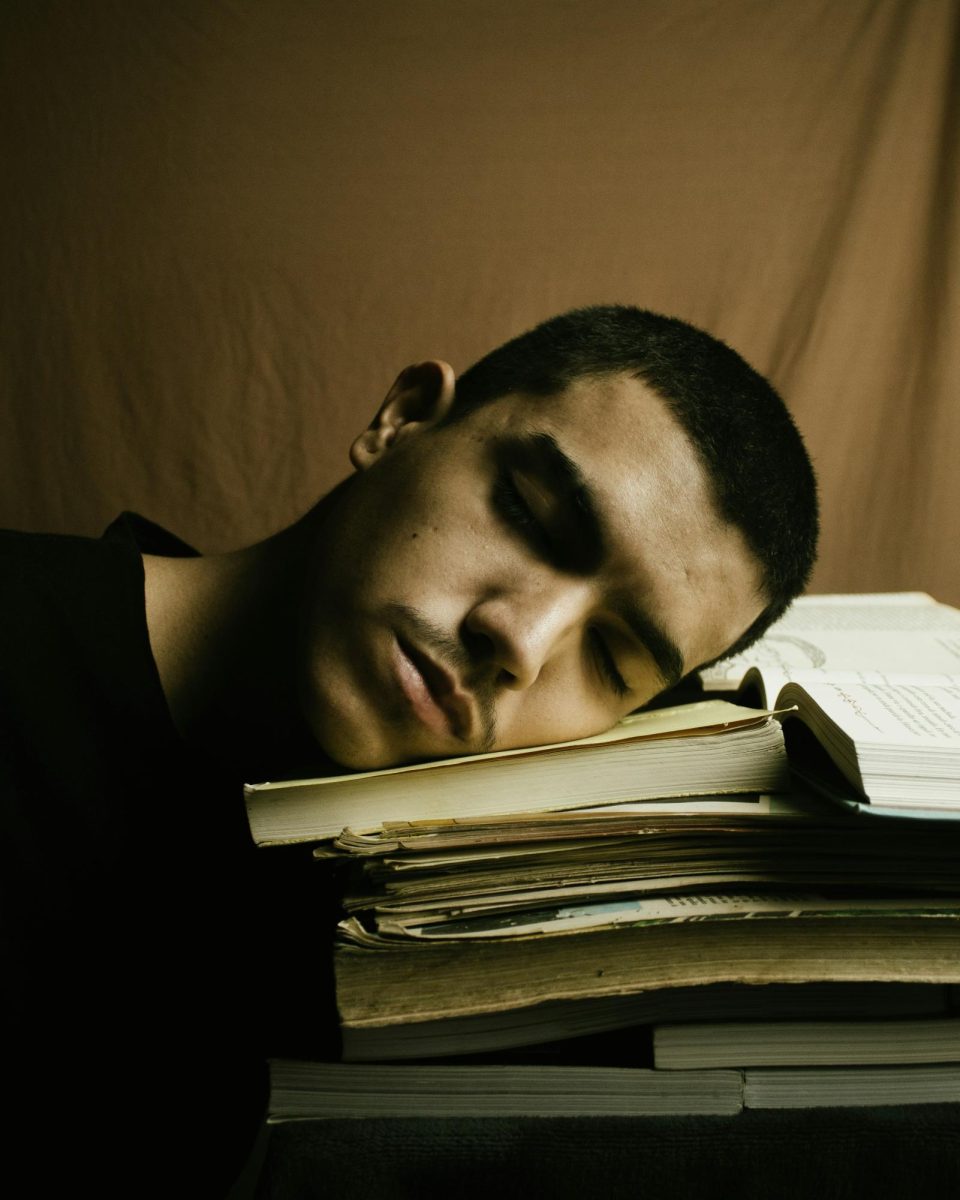It’s 2:00 am, and you’re starting your English paper that was assigned last week and is due tomorrow at 8:30. You’re telling yourself just “one more paragraph,” and before you know it, your alarm blares at 6:30 am. Sound familiar? Or is watching split-screen videos of subway surfers and slime in the dead of night more up your alley? For many students, this constant battle between homework, extracurriculars, and a social life affects their need for sleep, which never seems to be fulfilled. With finals, AP exams, and extracurricular activities piling up, no wonder sleep is at the bottom of our priority list. The lack of sleep leads to significant consequences for health and academic performance. This article will focus on sleep deprivation’s impact on students and some potential solutions to combat our unending struggle with sleep.
According to the American Academy of Sleep Medicine, it recommends that teenagers get between 8 and 10 hours of sleep every night. For reference, I usually get 3-4, and students I have asked at GC gave similar answers. And yet, sleep is an essential part of development. Sleep plays a significant role in major physical and cognitive changes during adolescence.
One of the most essential reasons teens need ADEQUATE sleep is its effect on the brain. Sleep helps save memories and improve cognitive performance. This makes it easier for students to learn and retain information. On the other hand, lack of sleep leads to difficulties with concentration, attention, and problem-solving skills (National Sleep Foundation). This affects grades because sleep-deprived students often struggle to focus in class or retain new material.
Sleep deprivation has a direct impact on mood and mental health. According to researchers at the National Sleep Foundation, teenagers are already dealing with the pressures of school, extracurricular activities, and relationships, and poor sleep only worsens those. Chronic lack of sleep has also been linked to more severe mental health problems, such as depression (American Academy of Sleep Medicine).
Also, when teens don’t get enough sleep, their immune systems weaken, making them more susceptible to illness. Despite these significant health risks, many students give up their sleep for homework, social media, or extracurriculars. LIKE SCROLLING TIKTOK AT 2:00 AM.
So, how are students coping with their lack of sleep? Many turn to caffeine or energy drinks to stay awake. Others try to take power naps during class or flex. Some students, especially during finals or midterms, are cramming late into the night (guilty!). Research shows that while caffeine may help boost alertness, it can interfere with sleep patterns, making it harder to fall asleep later

(American Academy of Sleep Medicine). Naps do not make up for the consistent lack of sleep throughout the week.
A solution involves reducing homework overload. Many students report feeling overwhelmed by the volume of assignments they are given, often leading to late nights spent trying to finish work. Experts recommend that schools and teachers work together to set more realistic homework expectations, for example, during periods of high stress like exam weeks (American Academy of Sleep Medicine). For many, this is not possible here at GC; perhaps the solution is to make a daily schedule so that you can make room for your homework, extracurriculars, AND sleep.
Lack of sleep is a significant issue for students, and it’s having a negative impact. Both schools and students need to understand the importance of adequate sleep. We should start seeking better solutions to address this problem. However, until changes are made, it seems that Good Counsel students will continue to rely on caffeine, power naps, and late-night cram sessions to get through the day.
Citations:
American Academy of Sleep Medicine. Sleep Deprivation and Teenagers. Sleep Education, 2020, www.sleepeducation.org/essentials-in-sleep/sleep-deprivation-and-teens. Accessed 9 Mar. 2025.
National Sleep Foundation. “Teens and Sleep.” Sleep Foundation, 2021, www.sleepfoundation.org/articles/teens-and-sleep. Accessed 9 Mar. 2025.
Wheaton, A. G., Ferro, G. A., & Croft, J. B. “School Start Times for Middle School and High School Students—United States, 2011–12 School Year.” Sleep Health, vol. 3, no. 6, 2017, pp. 423-429. https://doi.org/10.1016/j.sleh.2017.08.001.


